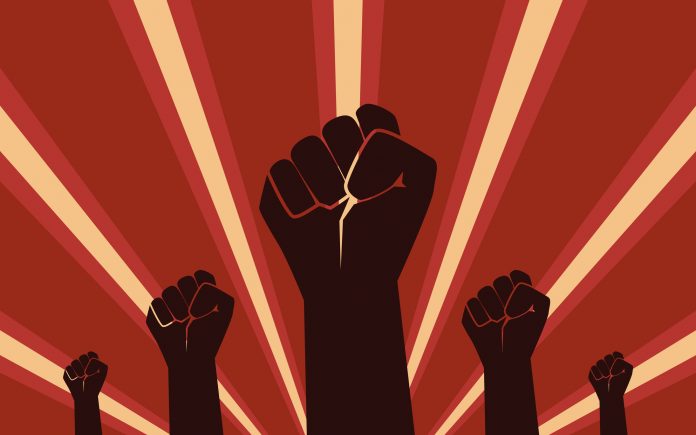For those dismayed at how many college and university students and faculty, even, or especially, at selective and prestigious institutions, have been cheering Hamas’ Oct. 7 atrocities and calling, in only slightly veiled language, for the destruction of Israel and genocide of Jews, the question is how this vicious line of thought gained hold in American secondary and higher education.
The answer seems to be that students have been infected, in high schools and colleges, with a virus that enables them to see history only as a struggle between oppressors and the oppressed, between vicious exploiters and virtuous victims.
This obviously owes something to Marxism, which teaches that an oppressed and exploited proletariat will inherit all power — or at least be the beneficiary of the intellectuals who grab it. But that version has had to be revised because contemporary working classes refused to play their assigned roles and mouth the lines that leftist intellectuals dictated to them.
Instead, the script has been adapted to attack other targets, with the vicious oppressors depicted as settlers coming into a new land and the virtuous oppressed depicted as previous residents and indigent peoples. This has the advantage of defining, if you twist the history a few times, the United States and Israel as villain regimes rather than as the historic leaders they have been and are in advancing religious tolerance, freedom of expression, rule of law, and electoral democracy.
One way to put this into perspective is to visit one of Washington, D.C.’s newest and least known museums, the Victims of Communism Museum, on McPherson Square, a few blocks from the White House. There you will get an idea of what true oppression is like — and how it has slaughtered 100 million people and blighted the lives of hundreds of millions of others.
It’s not a story in which American secondary schools or higher education seem much interested these days. For it tells how small gaggles of would-be intellectuals and violent gang leaders — frequently, as in the case of Joseph Stalin, the same person — gained dictatorial control of enormous nations while posing as champions of the supposedly virtuous, downtrodden masses.
From a combination of visual images and texts, you can learn how Vladimir Lenin was not the mild reformer that some apologists claim but instead a ruthless killer who set up the apparatus of mass murder that his successor Stalin utilized for nearly 30 years. You can read excerpts from Alexander Solzhenitsyn’s “Gulag Archipelago” and view paintings by Gulag survivors.
There’s a separate section devoted to the Chinese Communist Party, which next year will have been in power for 75 years — one year longer than the run of the Soviet Union. Young people who think it’s cool to wear Mao T-shirts might pay special attention to the exhibits on the 1959-61 Great Leap Forward, which was actually a great leap to starvation for 30 million people.
And Mao’s Cultural Revolution, with its purges of wrong thinkers and executions and rural exiles of professionals, enforced by youthful Red Guards, will have a certain familiar ring for those familiar with contemporary American campuses.
Of particular interest to me were the exhibits on the Baltic States’s self-liberation from the Soviet Union. I was in Estonia, reporting for U.S. News and World Report, in October 1989, just two months after the human chain across Estonia, Latvia and Lithuania marked the 50th anniversary of the Hitler-Stalin pact. I remember the European traffic signal-like signs, with a red diagonal line within a red circle and the numbers 23.08.39 and the names Molotov and Ribbentrop — the foreign ministers who signed the alliance of the two totalitarian tyrants on Aug. 23, 1939.
That enabled Adolf Hitler and Stalin to start dividing up Poland and the Baltics nine days later. The U.S., thankfully, never recognized the Soviet absorption of the Baltics, and today, they and Poland are part of NATO and providing vital aid to Ukraine.
Victims of Communism Museum President Andrew Bremberg tells me that when he asks students how many have heard of Stalin, about 1 out of 10 hands goes up. And when he asks students or adults who has heard of the Hitler-Stalin pact, no one raises a hand.
That’s unfortunate because this alliance of totalitarians, which with its allies controlled almost all of Europe and half of the land mass of Asia by spring 1941, was what inspired George Orwell’s dystopia in “1984.” Had Hitler not attacked Stalin in June 1941, could beleaguered Britain and technically neutral America have ended their totalitarian tyranny?
Young people and their elders who cheer the gleeful torture and murders of Oct. 7 do not understand what true evil is like. They could get a better idea at the Victims of Communism Museum.
Michael Barone is a senior political analyst for the Washington Examiner, resident fellow at the American Enterprise Institute and longtime co-author of The Almanac of American Politics. His new book, “Mental Maps of the Founders: How Geographic Imagination Guided America’s Revolutionary Leaders,” is now available.
COPYRIGHT 2023 CREATORS.COM
For more great content from Rights, Justice & Culture News.
For more from The Heartland Institute.






